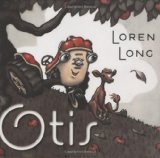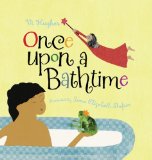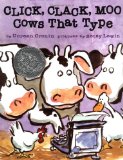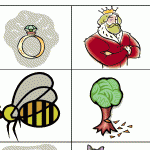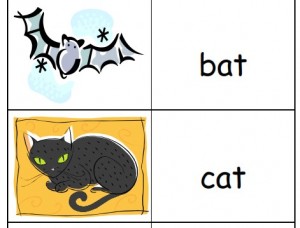Today we look at two popular learning games for beginning readers
I have used both spelling/reading games very successfully with four, five and six-year-olds. Neither is appropriate for younger children due to choking hazard caused by small parts.
We invite you to visit our page about beginning to read.
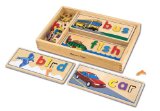 Melissa and Doug See and Spell
Melissa and Doug See and Spell
I recently purchased a Melissa and Doug See and Spell puzzle set for my Let’s Read Together program. The set consists of 60 plus colorful wooden letters and eight, two-sided template bases. As shown in my photo (right), the sixteen words include long and short vowels as well as digraphs.
I selected the Melissa and Doug See and Spell puzzle set because it is self correcting and it lends itself well to a group setting. When not being used in the template bases, the letters could be used to spell other words, they could be sorted by attributes or they could be put into alphabetical order.
When one or more children play with See and Spell it is an opportunity to practice letter, object and word recognition, matching, fine motor skills and/or spelling.
Melissa & Doug See & Spell at Amazon.com
Melissa & Doug See & Spell at Amazon.ca
I have used a Boggle Junior game in my Beginning to Read program for more than ten years. It is a great learning game for children who are learning to read and spell. The game consists of a series of illustrated three and four letter words. The words and illustrations are printed on durable cardstock. To play, a child selects a card and spells the word it illustrates using three or four letter cubes. The cubes fit into a sturdy base. The child has the option of seeing how the word is spelled (and simply matching the letters) or attempting to spell the word correctly and then checking to see if he is correct.
Boggle Junior can be enjoyed by one or more children. When one child plays with Boggle Junior it is an opportunity to practice letter, object and word recognition, fine motor skills, matching and/or spelling. When more than one child plays with Boggle Junior, playing the game becomes an opportunity to share and take turns. If two children are at different levels with respect to spelling and reading, one child could match the letters to correctly spell a word, another child could try to spell each word (without matching) and then flip a lever on the base to check the spelling.
The Boggle Junior word cards include short vowels, some long vowels and a few digraphs (i.e. fish).
Boggle Junior Game at Amazon.com
Boggle Junior Game at Amazon.ca





